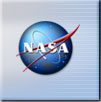 |
 |
An F-16XL aircraft was used by the Dryden Flight Research Center, Edwards, California, in a NASA-wide program to improve laminar airflow on aircraft flying at sustained supersonic speeds. It was the first program to look at laminar flow on swept wings at speeds faster than sound. Technological data from the program could assist in the development of future high speed aircraft, including commercial transports. Additional Information A certain amount of air turbulence occurs on the surface of most aircraft wings, regardless of shape and size. Because of its viscosity, as air moves across an airfoil, it changes from a laminar (smooth) flow at the forward area to a more turbulent flow toward the trailing edge. The "perfect" wing would demonstrate laminar air flow across the entire surface of the wing, with no sign of turbulence. This thin turbulent layer affects flying performance by increasing aerodynamic drag and fuel consumption. The experimental wing panel, made mostly of titanium, is perforated with about 10 million nearly microscopic laser-cut holes. An on-board suction system draws off, through the tiny holes, the turbulent layer of air flowing over the wing's surface. Eliminating the layer of rough air creates a laminar flow condition that reduces aerodynamic drag and contributes to fuel savings. The F-16XL aircraft were built by General Dynamics Corp., at Ft. Worth, Texas, as prototypes for a derivative fighter evaluation program conducted by the Air Force between 1982 and 1985. |
||||||||||||
|
||||||||||||